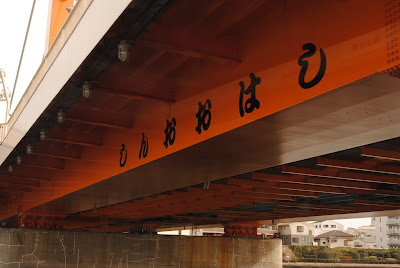Due to Cam's passport mishap (turns out washing machines and passports don't play nice together), we had to travel to Seoul for our 2 day holiday to visit the Canadian consulate. We arrived in Seoul on Monday, New Year's day, and went straight to Gyeongbokgung Palace. Gyeongbokgung is the biggest palace in South Korea and number 1 of 626 things to do in South Korea according to Lonely Planet. First constructed in 1394 and reconstructed in 1867, it is the main palace built by the Joseon Dynasty, once consisting of 330 buildings with 3000 staff members, all serving the royal family. Unfortunately during the Japanese colonial rule, much of the palace was destroyed. However, it is in the process of being restored to its original majesty and as of 2009, roughly 40% of the buildings have been reconstructed. The site also houses the National Folk Museum of Korea and the National Palace Museum of Korea.
For Seollal, the palace held a special outdoor performance, which included traditional dancing, music, and spiritual rituals. Admission to the palace, as well as the museums was free for the day. Visitors were also handed replica new year's paintings (sehwa), which were paintings that the king and his retainers would present to each other as gifts to celebrate the coming New Year. As 2012 is the year of the dragon, the replica is of Uryongdo, a painting of dragons in clouds. The original is housed inside Sajeongjeon Hall of Gyeongbokgung Palace.
The palace grounds, despite being only a small portion of the original, are enormous, with building after building. Not to mention the two museums, which both hold huge exhibits. If you are a traveler with some time to invest in Korean history, this is the place. You could easily spend a day here, meandering through the gardens, inbetween the numerous buildings and mysterious corridors. The unfortunate thing about visiting on January 23rd, is that it is cold. And when I say cold, I mean wearing long johns under jeans, two pairs of socks, 3 shirts, a huge jacket, a knitted scarf, toque, felt lined mittens, and that isn't enough. It was easily minus 10 outside, not including the windchill. Well it may not be that cold, but considering visiting the palace grounds entail a lot of walking around outside, it was a little too cold for us to spend as much time as we would have liked here. Hopefully we will get the chance to revisit the palace in the spring when the weather is a little more forgiving.
 |
| Main entrance to the palace grounds |
 |
| Two women dressed in traditional Hanbok clothing (with parkas on top!) |
 |
| Part of the special Seollal performance |
 |
| Uryongdo print |
*Credit goes out to Wikipedia and the Lonely Planet website for a lot of the facts included in this post














































